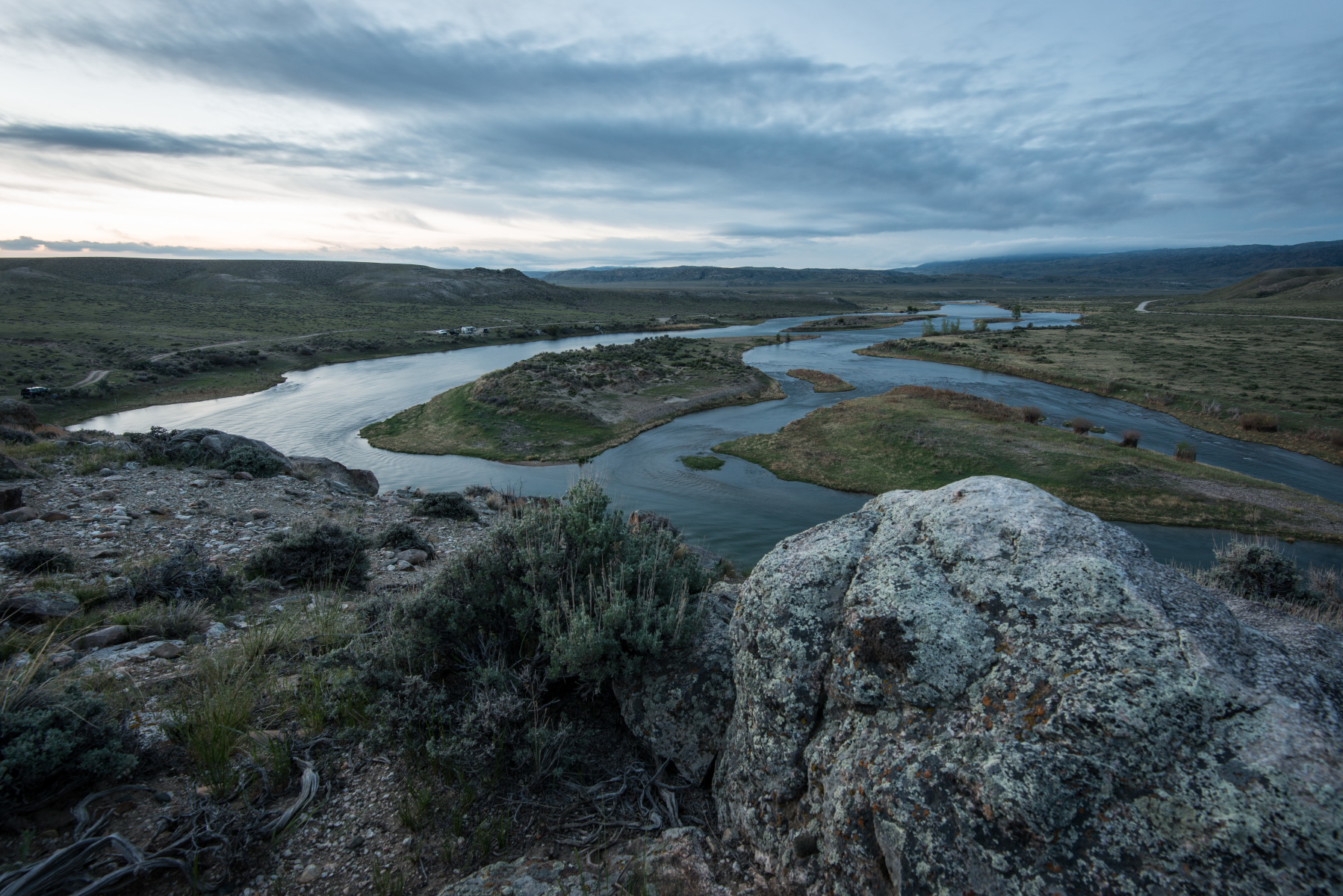Blue Ribbon

“There’s a pile of fish down there,” said Steven from the passenger seat, indicating the river below with a nod.
“You’ve got that right,” I agreed, assuming he was just making conversation. We were, after all, crossing a Blue Ribbon stretch of the North Platte.
Wyoming Game and Fish Department Assistant Fisheries Supervisor Mark Smith explains it a little differently. “Highly productive water,” is his phrase. But “a pile of fish” isn’t all that far from the official definition of Blue Ribbon. Created in 1961 and updated in 2006, the Wyoming Game and Fish Department stream classification system, which also includes the lesser red, yellow and green ribbon designations, is used to identify important coldwater fisheries. Streams holding more than 600 pounds of trout per mile are accorded Blue Ribbon status and deemed to be of national importance. Eighteen stretches on 16 Wyoming rivers and creeks have been so honored. With the designation comes higher Wyoming Department of Environmental Quality water quality standards and lower tolerance for pollution. In other words, Blue Ribbon classifications point anglers towards great fishing, while helping make sure it stays that way.
We parked the truck on the far side and stepped back onto the bridge to survey the course of our upcoming adventure. In a glance I realized Steven hadn’t been speaking in abstraction at all. Dark torpedoes strafed casually side to side in the gin clear current, more feeding trout than I could count, and rises dimpled the surface to the horizon.
“Oh man,” I said, “That is a PILE of fish!”
“Yep,” said Steven equally awed, “Blue Ribbon.”
*originally appeared in the July 2014 issue of Wyoming Wildlife Magazine. Support smart wildlife journalism by showing them some Facebook love here.

